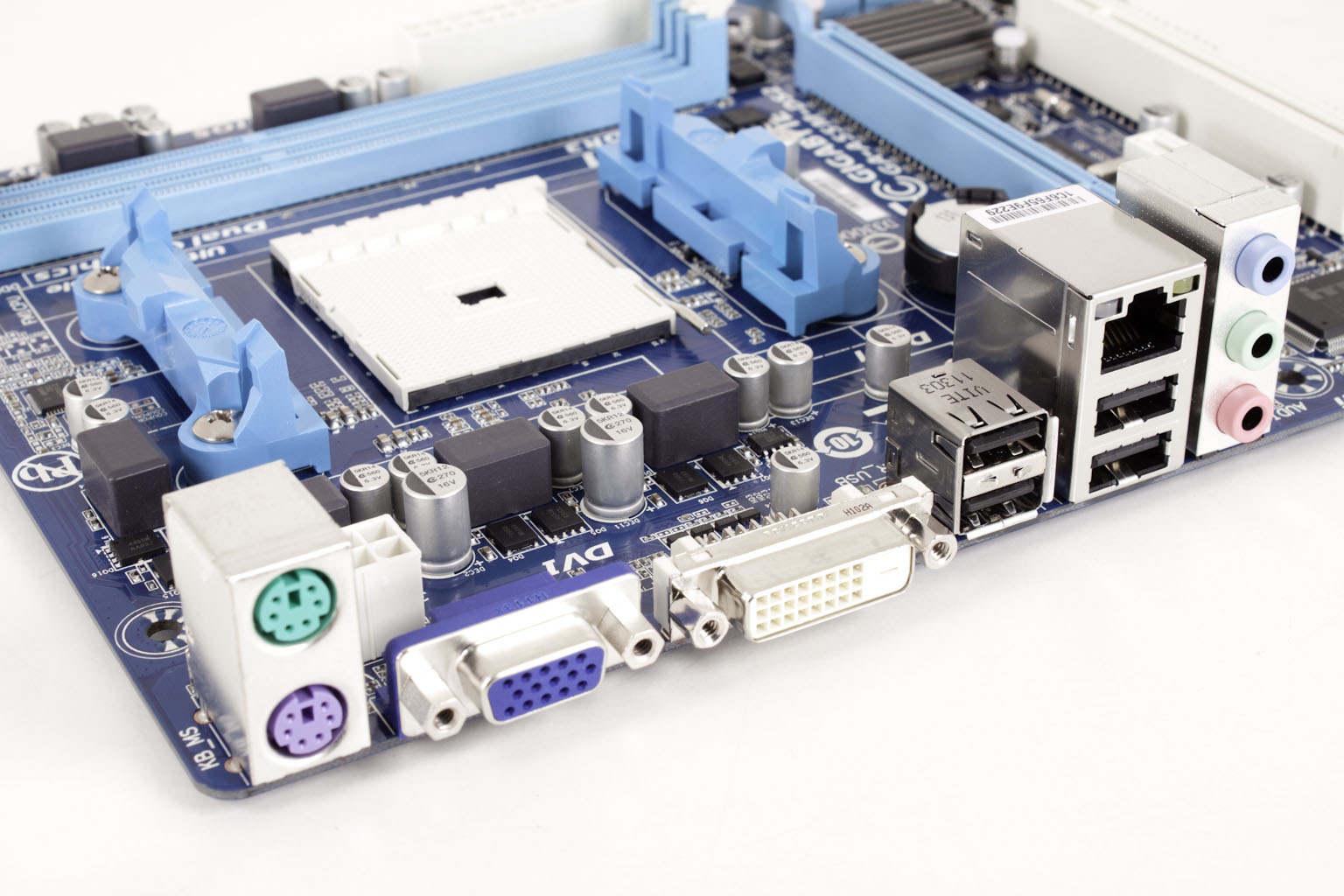The Test System and Comments -
Our test system is built on an open bench. This has two effects on testing. First it allows us to see everything and also to setup and disassemble the test rigs quickly. Second it means that we cannot gauge the potential air flow found in a normal case. The air is pretty stagnant; some may say this is a great neutral testing method and it can be. However, it does mean that the temperature reading taken off of the components are not accurate to what an average consumer would see. This means that your thermal performance will vary from what we see here.
The A55M-DS2 is an interesting board. The setup and configuration was very simple. It was almost a two-step process. You install Windows 7 then you install the drivers and utilities. From there you are off and running. However, it was not all fun and games. We ran into a few issues when we were testing. When we tried to drop in our Asus HD5870 V2 we found that all of the SATA ports were in the way.
We tried multiple things to get around this but even 90-degree angled cables would not let it fit. In the end we were not able to test with the 5870 in the system. Now this does not mean that you cannot use any add-in card, it just means that you will have to make sure that you chose a slim one or one that is short enough that it does not get in the way of the SATA ports.
Performance testing overview -
Our testing is a little different than most. We combine both synthetic and real-world applications to simulate the types of performance common to the individual products. For motherboards this means that we run roughly six synthetic tests and two real-world. We will be expanding the real-world testing in the near future. But there is more to performance than just the raw numbers. As there are multiple components and sub-components on a motherboard there each item can have a distinct impact on the way the product will perform once you get it in your system. It is important to note not only the actual results but what they mean to you as a potential consumer. We will try to give this information to you. But we do not just cover the performance aspects that are measurable. We also talk about the components that might not have a direct benchmark. These are items like Audio Quality, ease of use and installation.

 Although AMD’s future is far from certain we do know that they have been pushing towards lower power and lower cost devices. We have seen these in the form of their new APUs and their A75 and A55 chipsets. We have already tested the performance of the A75, now we are ready to take a look at the performance of one of the A55 based motherboards; the Gigabyte A55M-DS2. We have taken a look at the design choices and features so far and have come away with a bit of confusion as to where this product actually fits into the market. Now that we have put the board through our performance tests, let’s see if we can find out exactly where in the market the A66M-DS2 belong and if it is worth your time and money.
Although AMD’s future is far from certain we do know that they have been pushing towards lower power and lower cost devices. We have seen these in the form of their new APUs and their A75 and A55 chipsets. We have already tested the performance of the A75, now we are ready to take a look at the performance of one of the A55 based motherboards; the Gigabyte A55M-DS2. We have taken a look at the design choices and features so far and have come away with a bit of confusion as to where this product actually fits into the market. Now that we have put the board through our performance tests, let’s see if we can find out exactly where in the market the A66M-DS2 belong and if it is worth your time and money.

